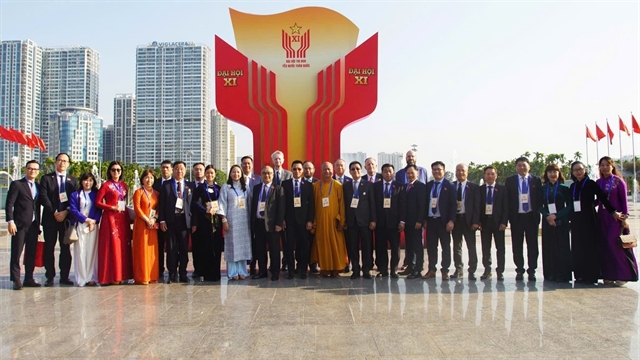 Economy
Economy

With Southeast Asia facing a funding deficit to meet its burgeoning energy and infrastructure needs, the region needs stronger coordination, skills and transparency in elevating sustainable projects to investors, according to the findings of a report by the Singapore Institute of International Affairs (SIIA).

|
| ASEAN needs stronger coordination, skills and transparency in elevating sustainable projects to investors. VNA/VNS Photo |
HCM CITY — With Southeast Asia facing a funding deficit to meet its burgeoning energy and infrastructure needs, the region needs stronger coordination, skills and transparency in elevating sustainable projects to investors, according to the findings of a report by the Singapore Institute of International Affairs (SIIA).
The findings and recommendations to government, banks and business were shared in the report issued on April 2.
The report, titled “Financing Sustainable Infrastructure in ASEAN”, finds that underpinning Southeast Asia’s underutilisation of sustainable financing to meet its vast infrastructure needs is a lack of commonality in environmental and social standards and risks considered by financial institutions, project developers, multilateral institutions and governments.
According to the Asian Development Bank, the infrastructure gap in the ASEAN region from 2016 through 2030 is estimated at US$2.8 trillion, or $184 billion annually.
Limited state budgets in many countries have raised the urgency for private financial institutions to channel more green and sustainable financing towards infrastructure projects.
This is especially true in the power and transport sectors, which have the largest climate-adjusted investment needs in developing Asia.
Recommendations
ASEAN governments should convene an Infrastructure Summit to emphasise the Master Plan on ASEAN Connectivity 2025 (MPAC 2025) as a regional blueprint for infrastructure projects, grow initiatives by each ASEAN member state, and track sustainable finance flows to power and transport projects, the report recommended.
ASEAN governments, together with multilateral institutions and industry players, could also train and equip workers with sustainability skills and knowledge in the renewable energy and sustainable transport sectors.
In addition, the ASEAN Secretariat could take the lead in developing a directory of green and sustainable funds for infrastructure projects in the region, it said.
Financial institutions with an interest in ASEAN’s power and transport sectors should disclose their sustainability policies and general guidelines on how they handle context-specific challenges in countries where they operate.
Financial institutions should also cover the key economic and social risks in their monitoring efforts, and tailor the frequency of monitoring based on the duration of project construction.
Financial institutions could also offer expertise in specialised financing, particularly infrastructure financing or green investments.
For their part, ratings agencies could develop a rating mechanism for the economic and social impacts of power and transport projects.
Chen Chen Lee, senior fellow at the SIIA, and one of the co-authors of the report, said: “Singapore and ASEAN need to make sustainable infrastructure the foundation for our long-term growth and resilience. We need to arrive at a common understanding around what sustainable infrastructure looks like so that we can walk the talk.”
“In many parts of Southeast Asia, the lack of infrastructure connectivity continues to hinder industrialisation and economic growth,” she said.
Challenges such as natural disasters and traffic congestion are significant and impact the quality of life of its people, she added.
Bridging the infrastructure gap requires green and sustainable financing as it promotes the efficient flow of capital towards activities that are more sustainable and responsive to climate concerns while achieving growth, she noted.
Jonathan Drew, managing director of Sustainable Finance of HSBC Asia Pacific, said: “Banks have a responsibility to direct the flow of capital towards building a sustainable future.”
The report provides practical suggestions on the steps that banks and financial institutions can take to help facilitate a common understanding within the industry on the key economic and social risks related to infrastructure projects, and build those into project selection and design, Drew said.
“This will be vitally important as we navigate through the current challenges, and also as we structurally shift towards a more sustainable future for all.”
The findings of the study stemmed from secondary research, two working group meetings, and interviews involving 118 representatives from 49 organisations.
The organisations included government agencies, multilateral organisations, banks and investors, project developers, financial services companies, NGOs, and academics. — VNS




